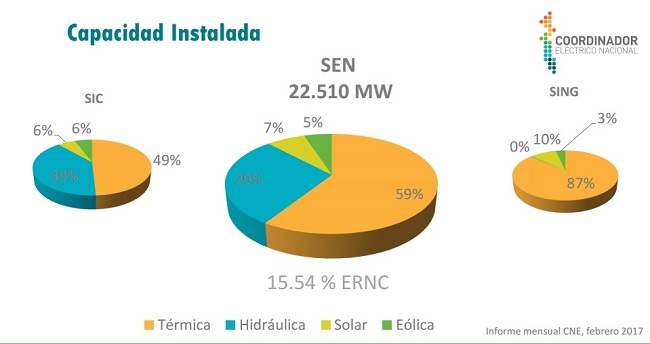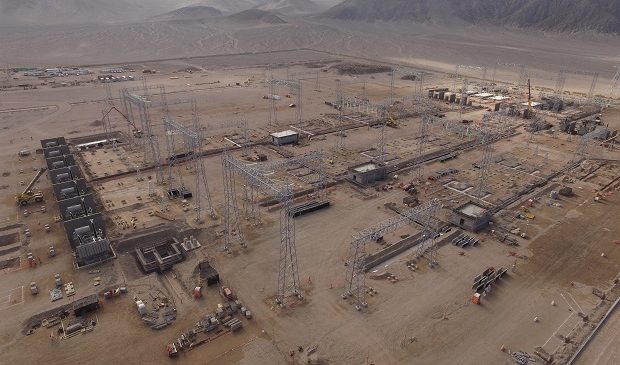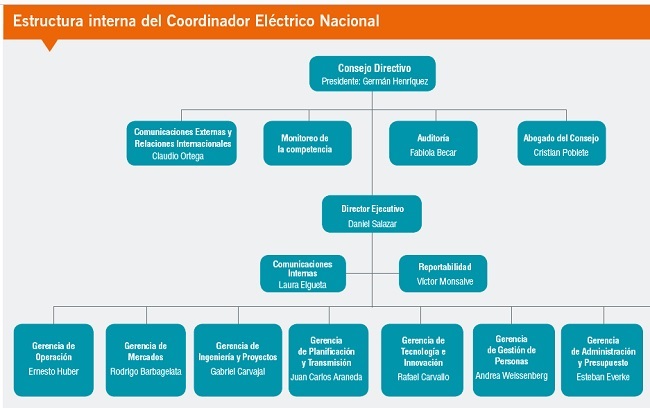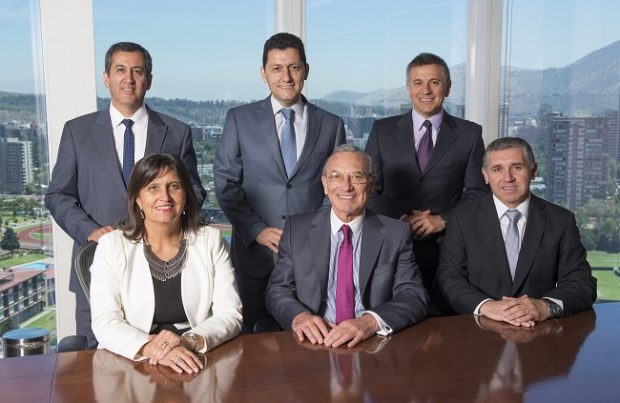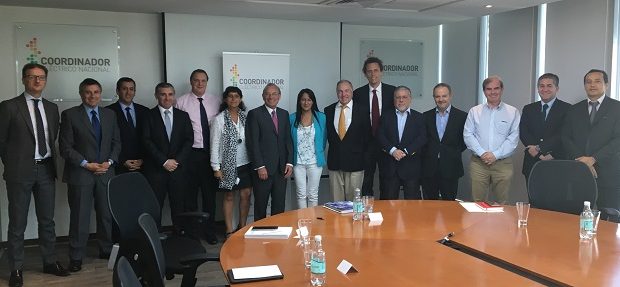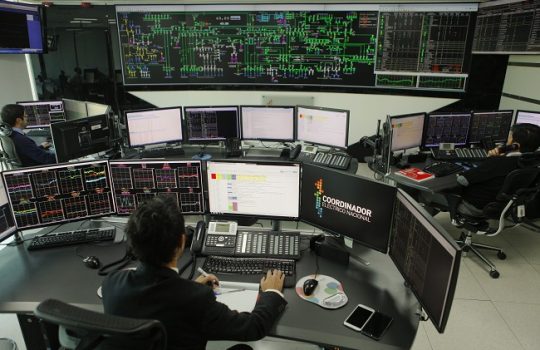
The CNE has a positive evaluation of the work carried out by this new body in charge of managing the operation of the electricity systems with a view to the interconnection of the SING and SIC next year, where its technical contribution in the work for the definition of complementary services and the expansion of transmission, in addition to facing other challenges, stands out.
National Electric Power Coordinator: New tasks and perspectives
The National Electric Coordinator is working at full speed in its first months of existence, following the merger of the Economic Load Dispatch Center of the Norte Grande Interconnected System (CDEC SING) with the central one (CDEC SIC) in view of the interconnection of both systems as of next year, in a process that includes the challenge of implementing the new tasks stipulated in the Transmission Law, such as monitoring competition and promoting Research and Development (R&D), among other points.
In the opinion of the authorities and specialists of the electricity sector consulted by ELECTRICIDAD Magazine, the new agency will have greater strategic importance because it will also play key roles in the planning of transmission expansion and in the definition of Complementary Services, in addition to the incorporation of new technologies for the safety of system operations.
Operations
The Coordinator’s task will not be minor considering that, once the interconnection is completed, it will have to control the operations of 3,100 kilometers in length, from Arica to the island of Chiloé, with a total installed capacity of 24,000 MW, meeting a maximum demand of 11,000 MW, according to the agency’s own estimates.
As of March of this year, the Norte Grande Interconnected System (SING) and the Central Interconnected System (SIC) have a total of 21,977 MW installed, of which 30.2% comes from hydroelectric sources (reservoirs and run-of-river), followed by coal (23.5%); natural gas (21.1%); oil derivatives (13.5%); solar (4.8%), and wind (4.7%).
The authority’s assessment of the agency’s performance is favorable. Andrés Romero, executive secretary of the National Energy Commission (CNE) told this newspaper that an example of the correct operation of the system is that “nobody has noticed this important change with the merger of the Economic Load Dispatch Centers (CDECs) into a National Electricity Coordinator, because there were no blackouts or outages, so our evaluation of the first quarter is very positive in terms of the institutional framework having worked, as indicated in the Transmission Law”.
“We see that each of the actors is doing its work in relation to the installation of the Coordinator and the hardest work this year in technical terms is the interconnection of the systems, for which we have a biweekly interaction with the Electric Coordinator and the companies”, indicates Romero.
The geographical and climatic conditions of the country are also a relevant factor in the operation of the system, says Luis Vargas, director of the Department of Electrical Engineering of the Universidad de Chile because “we have a unique electrical system, not only for being one of the longest in the world, but also because it will have a mixture of a thermal system in the north to the center, with hydroelectricity to the south, which is unusual. These two geographical components, added to the occurrence of severe weather events such as floods, earthquakes and volcanic eruptions, pose a challenge for the maintenance and operation of the unique system in the world, so it must be solved with our own capabilities, which will cause a great demand on the tasks of innovation and development that the Coordinator will have”.
This is shared by Esteban Gil, associate researcher at the Advanced Center for Electrical and Electronic Engineering (AC3E) of the Universidad Técnica Federico Santa María (UTFSM), who states that, as the electricity system grows in size and complexity, “the Coordinator must develop tools that allow it to automate processes to prevent interruptions, minimize the negative effects of contingencies and accelerate service recovery”.
In this line, the National Electric Coordinator has several technologies for monitoring and controlling the system, according to Raúl Moreno, executive of the agency, in the seminar “Risk management in the planning and operation of the electric system”, organized by Cigré Chile, among which he highlighted the Scada platforms, an integral control system for transfers in the northern zone, defense plans against extreme contingencies, the use of automatic generation control, a system for remote reading of protections and the monitoring of the dynamic transmission capacity.
The Coordinator’s Operations Manager, Ernesto Huber, referred to the treatment of the system’s operating risks, highlighting the resilience of the SIC during the recent forest fires that occurred in the first months of this year, particularly the operation in the Constitución area and the safety measures implemented in the 500 kV Charrúa-Ancoa section, which preserved the safety of the system and caused decoupling in marginal costs.
Huber pointed out that “in view of the future interconnection between the SIC and the SING, it is essential to continue preserving security and economic operation, guaranteeing free access. To this end, a series of studies, published in mid-March, were carried out during 2016 to evaluate the operating conditions of the national electricity system for different configurations.
This year the Coordinator will strengthen the WAM Network (large coverage network in which data can be transmitted) nationwide, with the implementation of 29 PMUs (Phasor Measurement Units) to capture the three-phase voltage and current signals of the electric power system in a synchronized manner with the help of a GPS device, to which five PMUs will be added next year. “During 2017 and 2018, important analyses and applications will be developed and implemented in power oscillations, angular stability, and dynamic determination of impedances, among others,” said Raul Moreno in his presentation of Cigré.
According to Esteban Gil, the nationwide WAM network will be a relevant milestone because this system “will make it possible to monitor the transmission network and implement a set of technologies to optimize the use of the network and detect situations that could jeopardize its stability at an early stage”.
The definition of complementary services is another of the tasks performed by the Coordinator, who delivered a report to the CNE that identified within these technologies frequency control, voltage control, load disconnection, and the service recovery plan, among others.
Pedro Miquel, director of Systep, states that the scheduling of complementary services “is a growing challenge, taking into account the increase in the penetration of variable renewable generation, which implies that the levels of thermal reserve (in cycling and ramping conditions) and the coordination of international exchanges must be increased”.
Transmission expansion planning is the other mainstay of the work carried out by the agency, which in January published a study proposing US$600 million in works for the trunk and zonal system. Pedro Miquel points out that in this area the priority zones are the north of the SIC, in addition to the expansion of the zonal systems, “whose requirements are particular to each zone, and there the challenge to develop expansion plans is to work in an integrated manner with the companies that own these assets in order to receive their contribution”.
This is highlighted by Andrés Romero “because it is the Coordinator who has a deep knowledge of the needs of the systems and, therefore, of the future trends in transmission”.
The vision and tasks of the board of directors of the organization
There are five committees organized by the Board of Directors of the National Electric Coordinator, where each of its members is in charge of its development and follow-up in the functions of Management, Risk and Audit; Electric Markets; Electric System Operation; Planning and Open Access; and Corporate Governance.
In this context, the president of the Board of Directors, Germán Henríquez, together with the other four directors of the organization (Pilar Bravo, Claudio Espinoza, Jaime Peralta and Andrés Alonso) and its executive director, Daniel Salazar, highlighted to ELECTRICIDAD Magazine the institutional objectives to be met.
Germán Henríquez: Becoming an International Benchmark
“The success of a system coordinator is measured by the service received by end users, in terms of greater safety, lower cost and better quality of electricity supply. To achieve this, we will work on having the best professionals and the most modern technology, in addition to the duty of the generation, transmission, distribution, large consumers and authorities to make their best effort in this line. We hope to improve all the system’s performance indicators in a few years until we reach the first Latin American level”.
Pilar Bravo: An organization with a public function
“The public law legal nature of the Coordinator responds to international best practices and to the need to have an autonomous body, which does not belong to the State, which is no longer constituted by the companies, with its own personality (which it lacked) to ensure that the system operates independently. The Coordinator now has new functions, with an emphasis on its public role and collective interest, ensuring transparency and information in the sector, monitoring competition, guaranteeing open access to the system’s networks, aspects that contribute to the common good, as well as the supervision by the relevant authorities of the system’s operation”.
Claudio Espinoza: Contributing to innovation
“At the Electric Coordinator, we understand innovation as a way to expand the possibilities and solutions of what we do, through an orderly, structured and sustainable process over time. We will work to build an innovative culture at all levels, from simple processes to complex technological solutions. We will encourage integration, participation and knowledge exchange with research centers, other operators and universities in Chile and abroad. Finally, the promotion of national research in electrical systems and their challenges will be another line of work in this area”.
Jaime Peralta: The Challenges of the SIC-SING Interconnection
“The electrical interconnection between the SIC and SING systems corresponds to one of the biggest challenges that the Electricity Coordinator will face during its first year of operation. In order to face this challenge, our technical teams have been working for more than a year in the preparation of studies, review of procedures and preparation of dispatchers in our control centers. The analyses carried out to date, which are in the public domain, seek on the one hand to guarantee a safe and reliable operation during and after the interconnection, and on the other, to ensure an economic operation by making efficient use of the available resources.
Andres Alonso: Role in monitoring the competition
“Law 20,936 gave the Electricity Coordinator the function of monitoring competition in the electricity market as of July 2018. This in accordance with international best practices of electricity system operators. The dependence of this new function will be in charge of the Board of Directors, outside the operational contingency of the Executive Directorate, for which a unit will be created with hierarchy composed of specialists in this matter, who will have all the information they require of the electricity market so that in case of detecting actions that could constitute attacks to free competition, the corresponding free competition authorities are informed.”
Daniel Salazar: New organizational structure
“We have just concluded the restructuring process of the National Electric Coordinator. It is an important milestone that allows us to have a defined team with a new strategic vision. We have given priority to ensuring operational continuity and minimizing the organizational impact, preserving the knowledge and experience present in the organization, integrating the traditional functions with the new functions defined by law. We are very satisfied with the step we have taken.
Box
Issues addressed with the electricity sector unions
The analysis of the current situation of the electricity sector was the keynote addressed by the Board of Directors of the National Electricity Coordinator with the board of directors of the main industry associations. On this occasion, the stakeholders were able to learn about the new functions and strategic objectives defined by the Coordinator for the coming years, and agreed to strengthen the technical information, collaboration and dialogue between the coordinated companies and the organization.
Among the associations that participated in the protocol meetings were the Asociación de Consumidores de Energía No Regulados (Acenor A.G.); Generadoras de Chile; Empresas Eléctricas A.G.; GPM A.G. (representing small and medium-sized generators), and the Asociación Chilena de Energías Renovables (Acera A.G.). Some unions told ELECTRICIDAD Magazine the issues they discussed with the National Electricity Coordinator.
Acera: Carlos Finat, executive director of the association, indicated that in the meeting with the authorities of the organization, Acera “expressed its willingness to collaborate with the Board of Directors in those matters within its reach, while the Council shared the objectives that the Coordinator has set as an institution, highlighting its aspiration to be an international reference in the operation of systems”.
Generadoras de Chile: Claudio Seebach, executive vice-president of the association said that “the Generators shared their strategic objectives as an association and the priorities for 2017, among which stand out the promotion of a more electric society and the progress towards greater flexibility of the electricity system. In this context, they shared the actions and agenda of studies aimed at modeling and regulatory proposals for scenarios of high penetration of Variable Renewable Energies (VRE)”.
GPM-A.G.: Carlos Barría, executive director of the guild said that in their meeting “technical issues of interest to both organizations were addressed, in particular, the joint challenges of facing 2017 with the work of creating a series of regulations and technical standards necessary to fully implement the new Law No. 20,936. It will be essential to work on the new Complementary Services Regulation and the new Coordination and Operation Regulation of the National Electric System”.
Empresas Eléctricas A.G.: Rodrigo Castillo, executive director of the association, mentioned that common challenges were raised “such as the integration of electricity systems, the quality of service, the number of supply cuts and the new way of carrying out transmission tenders and the impact of the theft of copper conductors in installations”.
Conclusions
– The CNE has a positive evaluation of the National Electric Coordinator, especially of its new tasks, where the definition of its internal structure is the biggest challenge, being the physical interconnection between the SING and SIC.
– In the incorporation of technologies, the Coordinator will strengthen the WAM Network at the national level to increase the security of the system in the event of emergencies.
– The agency has conducted several studies to define the complementary services, in addition to having made its first proposal for transmission expansion.



